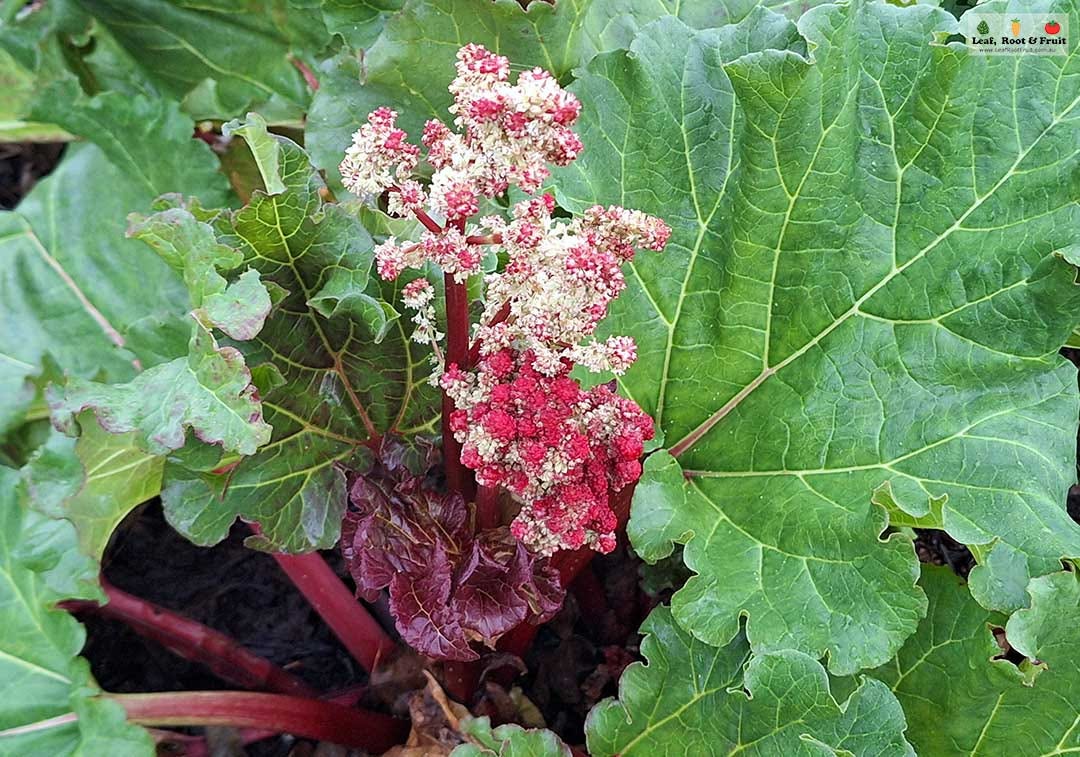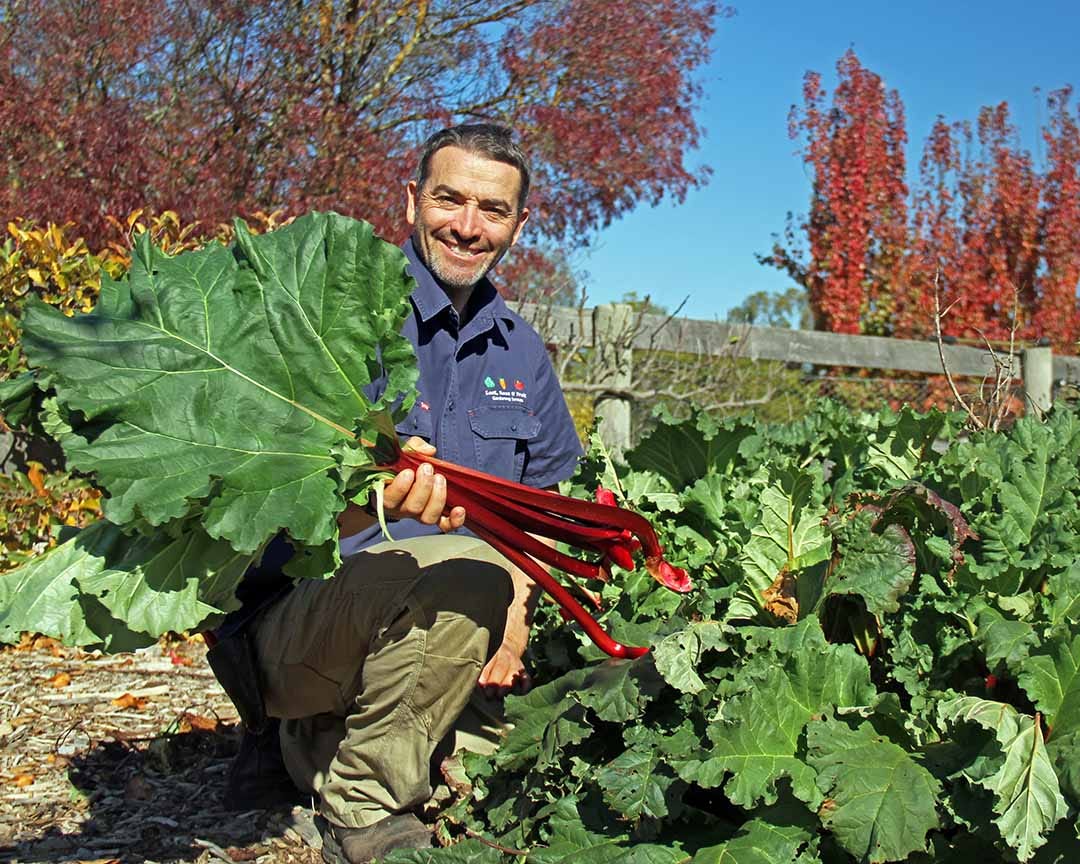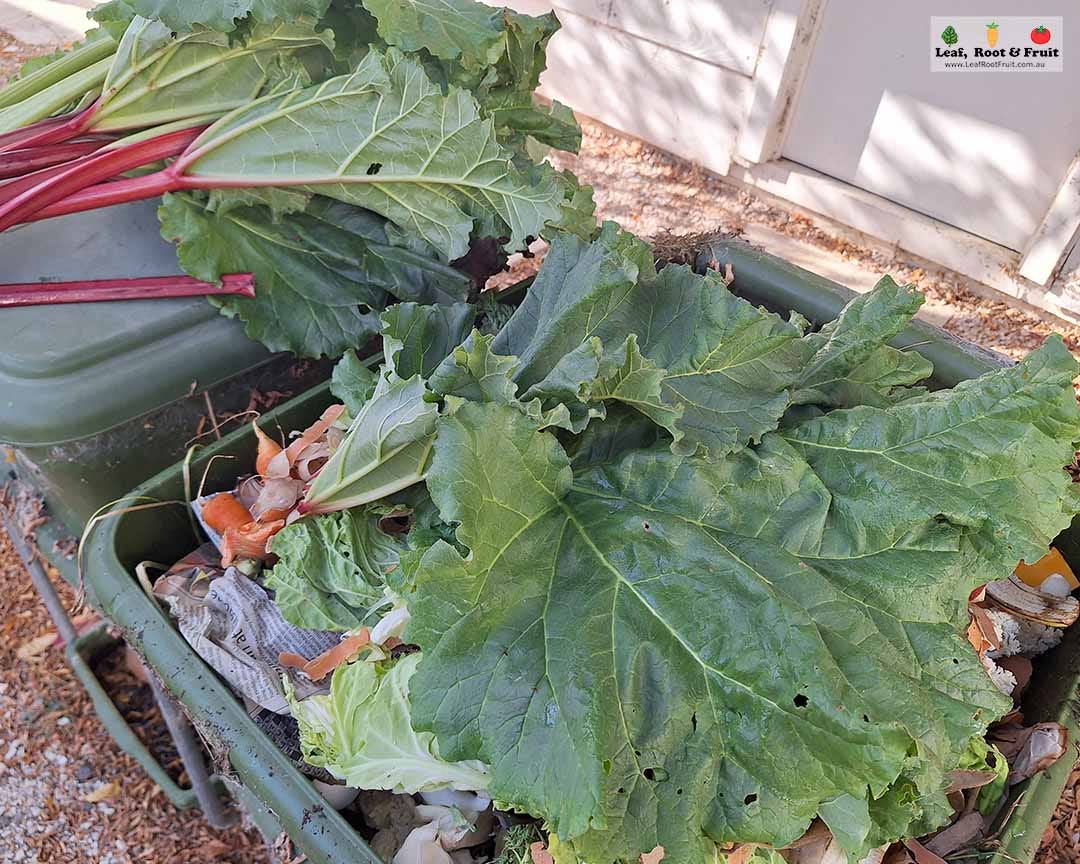When it comes to breakfast, I’m a no frills kinda guy. Every morning, I have four Vita Brits (wheat based breakfast biscuits for my international readers) topped with whatever fruit is in season. In summer, freshly picked berries adorn my simple breakky. When I’m tired of the berries I switch to stone fruit such as peaches and plums. Diced pears, nashi and apples get me through autumn and well into winter. It’s only in, say, August and September that it’s challenging to come up with breakfast cereal toppings. Then it’s store-bought banana, stewed summer fruit from the freezer, bottled pears or – more often – freshly stewed rhubarb.
Like a good friend, rhubarb is there for me no matter what the time of year. When it’s cold and when it’s hot, I can always scrounge some rhubarb stalks from the garden. Despite its reliability, I neglect harvesting it in summer and autumn, when there are easier and sweeter pickings to be had. But come late winter, I humbly return, keen for some home-grown goodness on my breakfast.
Rhubarb is ‘old-mate reliable’. A perennial friend who gives so much and expects so little in return.
With rhubarb you only get out what you put in
Once established, rhubarb plants are bulletproof. They’ll survive drought conditions just fine. They cope with semi-shade (read a list of other shade tolerant food plants here). Like most plants, rhubarb doesn’t like wet feet, but even then, it can tolerate brief periods of waterlogging.
Rhubarb is resilient. But if you want to harvest long, flavoursome rhubarb stems you’re going to need to give more than tough love. Consistent watering during dry spells will help the plants to thrive, as will regular applications of nitrogen. You can use an off-the-shelf general-purpose fertiliser. But I prefer to use chicken manure from my deep litter system. The nitrogen-rich manure is balanced by the carbon-rich woodchips that I place in the run. Over time the manure and woodchips form a product that is perfect for perennial crops such as rhubarb and asparagus. Every few moths I clean out the chicken pen and sprinkle some of it around the base of the rhubarb plants. I avoid dumping piles right on top of the crowns, but even then, I reckon they could handle it.

Common problems when growing rhubarb
Rhubarb is pretty much a set and forget vegetable. It largely remains free of diseases and pests.
The biggest problem seems to be short or spindly stems. Some of this can be attributed to variety selection, but it usually results from a lack of water or nitrogen (or both).
Occasionally crowns will rot if placed in heavy, waterlogged soil. So consider planting them in raised beds or mounds if your soil is heavy.
The following posts in the Vegetable Patch from Scratch series give more information relevant to growing rhubarb:
Myth-busting: Rhubarb leaves are poisonous
In some cultures, rhubarb’s vigorous growth and rich red stems (of some varieties) make it a symbol of prosperity and renewal. Rhubarb has been used in traditional rituals and ceremonies to ward off evil spirits. But a belief I can confidently debunk is the belief that rhubarb leaves are poisonous.
The scientific basis of the poisonous leaves myth is that they contain oxalic acid. Many other vegetables contain this compound in various concentrations, including spinach, beetroot, pumpkin seeds and some nuts.
Oxalic acid is fine to eat in low quantities. But should be avoided by those who have kidney disease or kidney stones. Analysis shows the oxalic acid concentration of rhubarb leaves is around five times greater than that of spinach leaves. It’s a good idea to avoid eating rhubarb leaves because of this high concentration, but depending on how healthy your kidneys are, you would need to eat a lot of them to kill you. Rhubarb stems also contain oxalic acid but in much lower quantities. Boiling or stewing the stems helps to break the oxalic acid down to a level our bodies can digest.
I’m often asked if it is okay to put (supposedly toxic) rhubarb leaves into the compost. Folks are worried about poisoning their plants. The answer is yes, you can safely do this. The oxalic acid in the leaves naturally breaks down to carbon, water and oxygen, which plants can use.
The nitty gritty of growing rhubarb: phenology, varieties and planting
Timing
This chart shows the best times to plant rhubarb crowns (pieces of plant that have been divided) based on my experience of growing them in both Melbourne (warm temperate) and Kyneton (cool temperate), both in south-eastern Australia. The timing is applicable for growers in the same climates across the southern hemisphere. Northern hemisphere folks will need to adjust the timing by six months.



